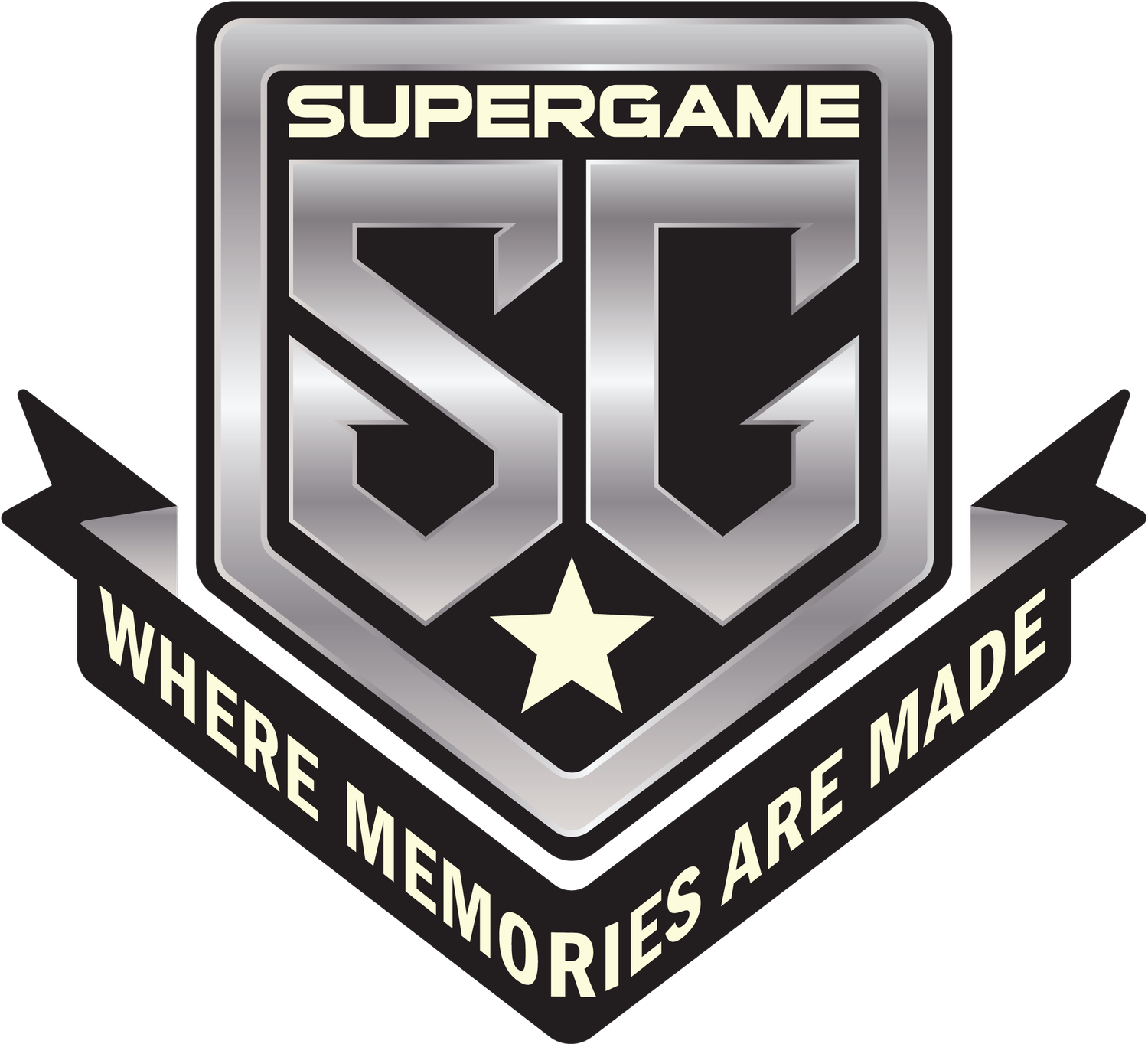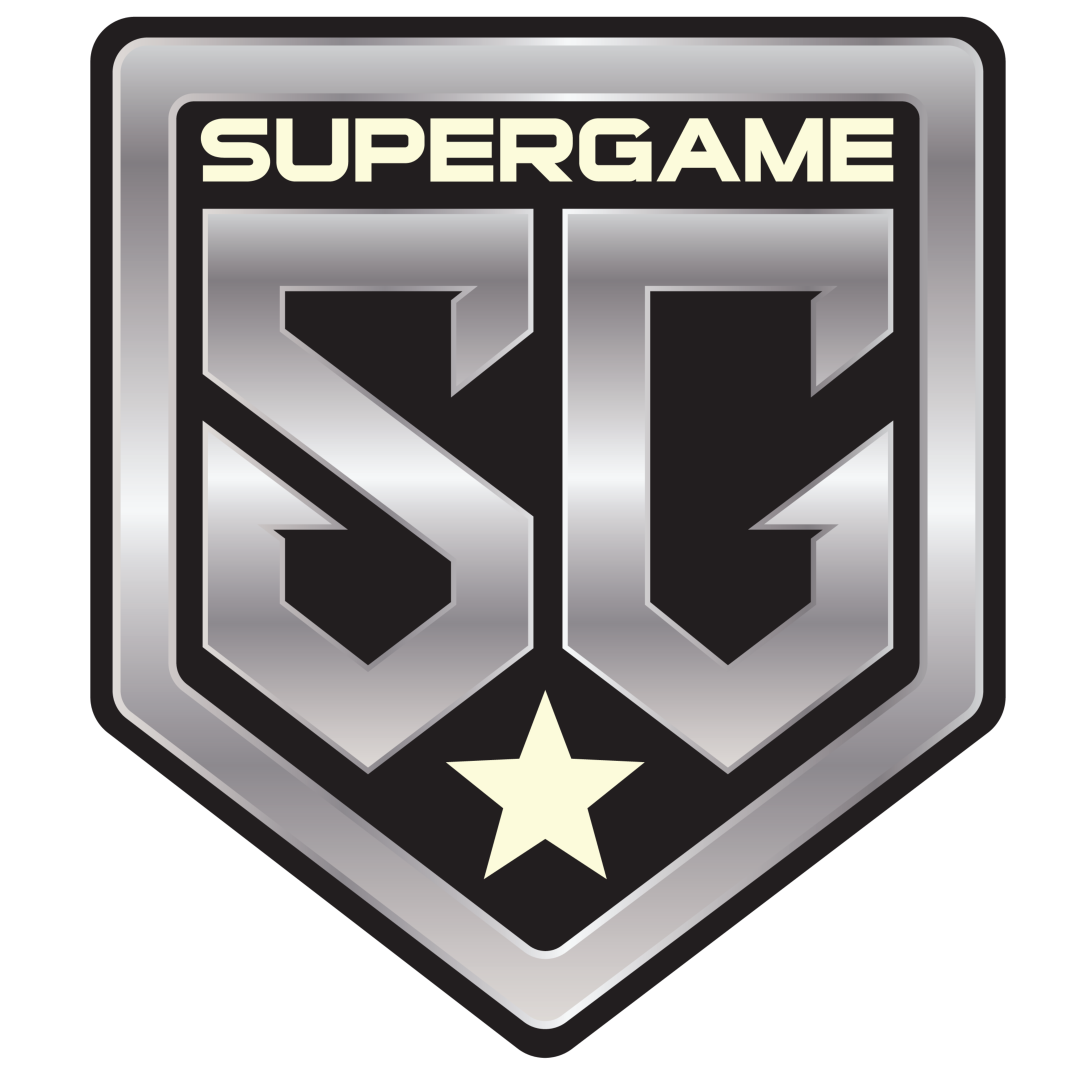
SUPERGAME 3-PLAYER MECHANICAL TOURNAMENT RULES
UPDATED 4.25.24
Game Format: Center flag: At the start of the game a single flag will be placed in the center of the field. The object of the game is to capture the flag and hang it in the opposing team's start gate.
Game Time: Game time will be limited to 3 minutes.
Number of players: A maximum of 3 players are allowed on the field for each team.
Rosters: Teams may have up to 5 active players on their roster. Only players who have purchased a valid entry to SuperGame are eligible to play in any special event.
Marker Restriction: This event is for Mechanical markers or electronic markers set to 5.5 bps.
Paint Restriction: This event is a limited paint event. All players are limited to their hopper full of paint only. The hopper must be of standard size (+/- 200 round hoppers only).
Velocity of Markers: The velocity limit for this event is 280 fps (feet per second).
Illegal Items: No radios. No tools that can adjust the velocity of the gun on the field.
Eliminations: Referees will eliminate players for the following reasons:
1. Hit. Player is marked with paint from a direct hit leaving a nickel size mark of paint or larger.
2. First Offense of Inappropriate Language. (When a player directs the inappropriate language at another player, spectator, or referee).
3. Second offenses for wrongfully calling for a paint check, or use of inappropriate language. (Inappropriate language used to vent out of frustration)
4. Surrender. Player without being hit raises marker above head, or shouts “hit” or “out”, walks with eliminated player(s) or otherwise creates the appearance of having been hit.
5. Faulty Start. Player’s marker barrel is not touching or breaking the plane of the flag station at the game start. Players that leave early and do not shoot, may return and touch the flag station, without penalty.
6. Abandoned Equipment or Uniform. Player abandons equipment (other than squeegees, the game flag, rags), on the field by more than five feet.
7. Faulty Check-Out. Live player checks-out at game end with an unobvious hit.
8. Dead Man Walks are prohibited, as defined herein: Players that take such action that would cause members of the opposing team or field referees to reasonably believe that such players have been eliminated, including but not limited to, calling themselves hit or out, holding their marker above the shoulders, placing objects in the barrel, walking with eliminated player(s), turning away from oncoming aggressive player(s) will be eliminated. Players who have been marked by a player doing a dead man walk will be reinstated in the game unless the player has already been eliminated by a referee.
9. Velocity Violation. Shooting over 280 fps.
Penalties:
One-for-One. Assessment of the one-for-one penalty (the removal of the player committing the infraction and a teammate) may take place for the following infractions:
1. Playing-On. A player that continues to play after an obvious hit with the intent to change the outcome of the game is Playing- On, but does not materially influence the course of the game. (Eliminating an opponent)
2. Disobedience. Player fails to obey a direct instruction of a Referee (discretionary).
3. Physical Aggression. Player attempts physical contact with another person on the field in a hostile manner.
4. Affiliated Spectator Interference. Spectator that is known to be affiliated with the team or a player on the team provides strategic advice. (Spectator is removed and player is eliminated)
5. Tools. Player possesses but does not use tools on the playing field.
6. Velocity Violation. Shooting over 301 fps.
7. Distraction Tactics. Requesting a paint check to distract a Referee from a hit on a player or a playerʼs teammate.
Team Forfeiture. All live players eliminated and removed from the field of play may take place for the following infractions:
1. Playing-On. Player continues to play after an obvious hit and materially alters the course of the game (shooting and eliminating an opponent).
2. Playing-On. Player fires marker after acknowledging elimination, with the intent to eliminate an opposing player.
3. Wiping. Player deliberately removes paint in order to avoid elimination.
Game End:
Cease Shooting. Players may not fire their markers following:
1. An instruction from a Field Ref to cease fire;
2. When a player hangs the Flag and the Flag Referee calls and signals time.
3. When Official Game Time expires.
Inspection. All live players at the end of a game must present themselves to a Field Ref for inspection. At this time, a Field Ref will inspect the player for hits, and if any are found, the Head Ref will be notified, and proper penalties will be assessed. If a player fails to check-in and is not counted, then that player will be considered eliminated.
Game End. A game will end only by the Head Referee on the field announcing, “Game over”! and doing the appropriate hand signal.
Tie Breaker: If the game is tied after the 3 minutes are up, the game will be decided by the following tie breaker rules in order.
Flags:
1. Possession of flag
2. Most live players on the field
3. Least penalties
4. First flag pull
5. Closest player to the flag
6. If the game is still tied after all tie breakers, then there will be a 30 second tie breaker game, 1 on 1.
7. Coin toss.
1. Carrying the Flag. Players carrying flags must carry them in full view. Players cannot attempt to hide or disguise the flag in any way.
2. Passing the Flag. Flags may be passed from live players to live players.
3. Eliminated while Carrying Flag. A player eliminated while in possession of a flag will drop the flag at point of elimination.
4. Game End. If the flag carrier touching the opponent teamʼs flag station with the center flag is found not to have a hit, then the hang will be successful and the game will be declared over as of the time the flag carrier touched his or her teamʼs flag station.
Marked with Paint:
A player will be eliminated if such player is marked with paint.
1. A player is marked with paint if a paintball shot out of a paintball marker by any live player, including members of the opposing team or a players own team, strikes that player or anything he/she is wearing or carrying and the paintball breaks upon the object struck and leaves a paint mark.
2. If a Referee does not see a paintball shot by a live member of the opposing team or the players own team strike that player or anything he or she is wearing or carrying, but that player or that players equipment is marked with paint, then such player will be eliminated. Generally, if the paint marking is reasonably solid and the size of a nickel, it will be considered a valid hit. If the referee witnesses the ball hit and break and leaves less than a nickel size it will be considered a valid hit.
3. Conversely, a player will not be eliminated if a player is hit and marked by a paintball shot by an eliminated member of the opposing team or if a paintball strikes the player or anything he is wearing or carrying but does not break or if a paintball strikes another object first and breaks upon that object before marking a player or anything he/she is wearing or carrying.
4. Referees will wipe splatter or non-valid hits off a player at the time they are inspected. Players playing with paint that is considered non-valid will do so at their own risk, until it is wiped clean by a Referee.
5. Players who are in motion while hit in obvious locations, which are easily verifiable, will immediately turn their motion away from the opposition, and stop. If two opposing players are hit and marked, as provided in this Rule simultaneously, or if the Referee cannot determine which player was hit and marked first, both players will be eliminated.
6. Pods with Non-Valid Hits. A Player may use disposed pods that have been marked with paint, but still contain paintballs as long as the player notifies the nearest referee that the pod has a non-valid hit. If a player does not notify a referee, the player may use the pods at his/her own risk of being eliminated.
Hits:
Obvious Hits. Obvious hits are those which impact and break on observable places on the body or equipment. Players who are hit in an obvious location are expected to immediately signal their elimination by announcing “HIT” or “OUT” and placing a hand on top of their head at the time of such elimination and going straight to the elimination box.
Obvious, but not Easily Verifiable while wearing goggles. Players with obvious hits in areas which are not easily verifiable, such as the back, must immediately call on a teammate who can easily verify whether or not the paintball broke to indicate whether or not such player was eliminated. The teammate must respond immediately, and if the hit player was eliminated, he must cease play, signal his elimination, and exit the field. Failure to call on such teammate for verification or failure of such teammate to respond immediately constitutes playing-on by the hit player. If no such teammate is available for verification, such player must immediately call for a paint check by a Field Ref. Failure to call for such a paint check immediately will constitute playing-on by such player.
Unobvious Hits. Unobvious hits are those which impact and break on players harnesses & tubes located on players back. Players with unobvious hits will be eliminated but will not be penalized. Should a player with an unobvious hit become aware, through his/her own actions or through information provided by teammates that he/she has been validly marked, such hit at such time shall then be deemed to constitute an obvious hit. Any part of the harness located in front of a player’s hips are considered obvious.
Rule Changes:
From time-to-time these rules may need to be changed or modified, or something may come up that is not covered in these rules. Any decision/rule modification or change is up to the discretion of the Head Referee and may be done at any time during the event.

